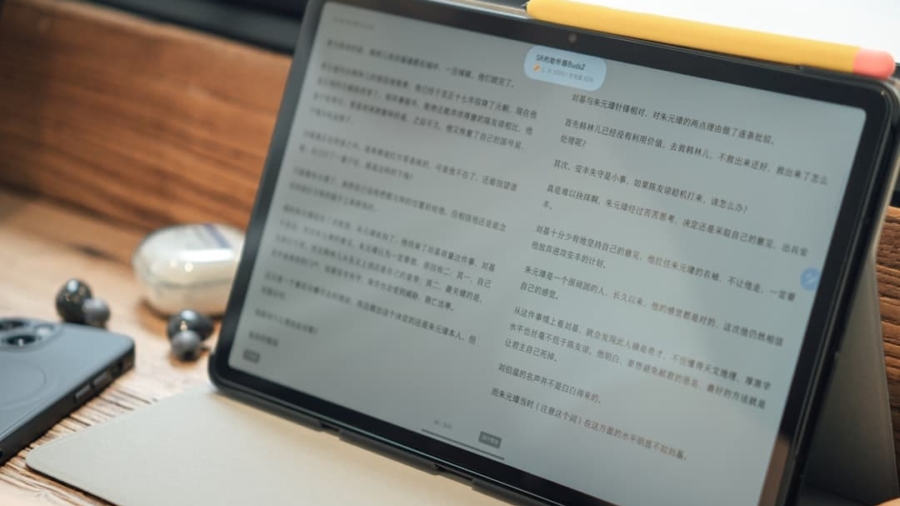Real-time feedback is a critical component in the development of writing skills, as it provides immediate insights into a writer’s strengths and weaknesses. This immediacy allows writers to make adjustments on the fly, fostering a more dynamic learning environment. When feedback is delivered in real-time, it can address specific issues as they arise, rather than allowing students to continue down a potentially misguided path.
For instance, if a student is struggling with sentence structure, immediate feedback can guide them to revise their sentences before they become entrenched in poor habits. This timely intervention not only enhances the learning experience but also builds confidence, as students see their progress in real-time. Moreover, real-time feedback encourages a growth mindset among writers.
When students receive constructive criticism as they write, they are more likely to view challenges as opportunities for improvement rather than insurmountable obstacles. This shift in perspective is crucial for developing resilience in writing, as it empowers students to take risks and experiment with their voice and style. For example, a student who receives immediate feedback on their use of figurative language can quickly learn how to enhance their writing by incorporating more vivid imagery or metaphors.
This iterative process of writing and receiving feedback cultivates a deeper understanding of the craft, ultimately leading to more skilled and confident writers.
Key Takeaways
- Real-time feedback is crucial for developing writing skills as it provides immediate guidance and correction.
- Technology plays a significant role in offering real-time feedback for writing through tools like grammar checkers and writing analysis software.
- Incorporating real-time feedback into writing instruction can be achieved through peer review, teacher-student conferences, and online writing platforms.
- Real-time feedback has a positive impact on improving writing skills by addressing errors and guiding students towards better writing practices.
- Challenges in implementing real-time feedback for writing can be overcome by providing training for teachers and students, and by using user-friendly technology.
The Role of Technology in Providing Real-Time Feedback for Writing
Technology has revolutionized the way educators can provide real-time feedback to students. With the advent of various digital tools and platforms, teachers can now offer instantaneous critiques and suggestions that were previously impossible in traditional classroom settings. For instance, applications like Google Docs allow multiple users to collaborate on a document simultaneously, enabling teachers to comment on students’ work as they write.
This not only facilitates immediate feedback but also encourages peer collaboration, as students can engage with each other’s writing in real-time. Additionally, advanced writing software equipped with artificial intelligence can analyze text for grammar, style, and coherence, providing instant suggestions for improvement. Tools such as Grammarly or ProWritingAid offer insights that help writers refine their work as they compose.
These technologies can highlight issues such as passive voice or overused words, prompting writers to consider alternatives on the spot. The integration of such tools into the writing process not only streamlines feedback but also empowers students to take ownership of their learning by actively engaging with the suggestions provided.
Strategies for Incorporating Real-Time Feedback into Writing Instruction

Incorporating real-time feedback into writing instruction requires thoughtful strategies that align with educational goals and student needs. One effective approach is the use of peer review sessions where students exchange drafts and provide each other with immediate feedback. This collaborative process not only fosters a sense of community but also allows students to learn from one another’s perspectives.
By guiding students on how to give constructive criticism—focusing on specific elements such as clarity, organization, and voice—teachers can enhance the quality of feedback exchanged during these sessions. Another strategy involves integrating technology into the writing process through platforms that facilitate real-time commenting and editing. For example, using tools like Padlet or Microsoft Teams can create a virtual space where students can post their work and receive instant feedback from both peers and instructors.
Teachers can set up structured prompts or questions that guide the feedback process, ensuring that students focus on key aspects of their writing. This structured approach not only helps students develop critical thinking skills but also reinforces the importance of specific elements in effective writing.
The Impact of Real-Time Feedback on Writing Skill Improvement
The impact of real-time feedback on writing skill improvement is profound and multifaceted. Research has shown that students who receive timely and specific feedback tend to demonstrate greater gains in their writing abilities compared to those who receive delayed or vague critiques. For instance, a study conducted by the National Writing Project found that students who engaged in regular peer review sessions with real-time feedback showed significant improvements in their overall writing scores over a semester.
This improvement can be attributed to the immediate nature of the feedback, which allows students to make corrections and adjustments while the material is still fresh in their minds. Furthermore, real-time feedback fosters a culture of continuous improvement among writers. When students are accustomed to receiving immediate responses to their work, they are more likely to adopt a proactive approach to their writing process.
For example, a student who receives prompt feedback on their thesis statement can refine it before moving on to subsequent paragraphs, resulting in a more cohesive and well-structured essay. This ongoing cycle of writing and revising not only enhances individual pieces but also contributes to long-term skill development.
Overcoming Challenges in Implementing Real-Time Feedback for Writing
While the benefits of real-time feedback are clear, implementing it effectively can present several challenges for educators. One significant hurdle is the time constraint faced by teachers in providing individualized feedback to each student during class time. To address this issue, educators can leverage technology by utilizing automated feedback tools that provide initial critiques before human intervention is necessary.
By combining automated suggestions with personalized comments, teachers can streamline the feedback process while still offering valuable insights. Another challenge lies in ensuring that students are receptive to feedback and understand how to apply it constructively. Some students may feel overwhelmed or discouraged by criticism, particularly if it is not framed positively.
To mitigate this issue, educators should focus on creating a supportive classroom environment where feedback is viewed as a tool for growth rather than a judgment of ability. Training students in self-assessment techniques can also empower them to take charge of their learning journey. By teaching them how to identify areas for improvement independently, educators can foster resilience and adaptability in their writing practices.
The Connection between Real-Time Feedback and Student Engagement in Writing

Real-time feedback has a direct correlation with student engagement in writing activities. When students receive immediate responses to their work, they are more likely to feel invested in the writing process. This engagement stems from the interactive nature of real-time feedback; students are not merely passive recipients of information but active participants in their learning journey.
For instance, when a teacher provides instant feedback during a writing workshop, students are encouraged to ask questions and seek clarification, leading to deeper discussions about their writing choices. Moreover, the immediacy of real-time feedback can spark motivation among students who may otherwise struggle with writing tasks. When they see tangible improvements in their work through prompt critiques, they are more likely to take risks and experiment with different styles or techniques.
A student who receives positive reinforcement for using vivid descriptions may be inspired to incorporate more sensory details into future pieces. This cycle of engagement and improvement creates a positive feedback loop that enhances both motivation and skill development.
How Real-Time Feedback Can Support Differentiated Instruction for Writing
Real-time feedback is particularly beneficial for differentiated instruction in writing classrooms, where students have varying levels of ability and diverse learning needs. By providing immediate insights tailored to individual student needs, educators can ensure that all learners receive the support necessary for growth. For example, advanced writers may benefit from nuanced critiques that challenge them to refine their voice or explore complex themes, while struggling writers may require more foundational guidance on grammar and structure.
Additionally, technology plays a crucial role in facilitating differentiated instruction through real-time feedback. Educators can utilize adaptive learning platforms that adjust the level of feedback based on student performance. For instance, if a student consistently struggles with punctuation errors, the platform can provide targeted exercises and immediate corrections tailored specifically to that student’s needs.
This personalized approach not only addresses individual challenges but also empowers students by allowing them to progress at their own pace.
Best Practices for Utilizing Real-Time Feedback to Enhance Writing Skill Development
To maximize the effectiveness of real-time feedback in enhancing writing skill development, educators should adopt several best practices. First and foremost, clarity is essential; teachers should communicate specific expectations regarding what constitutes effective writing and how feedback will be delivered. Establishing clear criteria helps students understand what they should focus on when revising their work.
Additionally, fostering a culture of collaboration is vital for successful implementation. Encouraging peer-to-peer feedback not only lightens the teacher’s workload but also promotes critical thinking among students as they evaluate each other’s work. Structured peer review sessions with guided questions can help maintain focus and ensure that feedback remains constructive.
Finally, integrating regular reflection opportunities into the writing process allows students to internalize the feedback they receive. By encouraging them to reflect on how they applied suggestions or what they learned from critiques, educators can reinforce the importance of continuous improvement in writing skills. This reflective practice not only solidifies learning but also cultivates a sense of ownership over one’s writing journey.
In conclusion, real-time feedback serves as an invaluable tool in developing writing skills across diverse educational contexts. By leveraging technology and implementing effective strategies for providing immediate insights, educators can create an engaging and supportive environment that fosters growth and resilience among student writers.
A related article discussing the latest technology in smartphones can be found at Unlock the Power of the Galaxy with the Samsung S22 Ultra. This article explores the features and capabilities of the Samsung S22 Ultra, highlighting how advancements in technology can enhance productivity and creativity. Just like real-time feedback is revolutionizing writing skill development, cutting-edge smartphones like the Samsung S22 Ultra are changing the way we communicate and interact with the world around us.
FAQs
What is real-time feedback in writing skill development?
Real-time feedback in writing skill development refers to the immediate and ongoing feedback provided to writers as they are in the process of writing. This feedback can come from peers, teachers, or technology tools, and is aimed at helping writers improve their skills as they are actively engaged in the writing process.
How does real-time feedback enhance writing skill development?
Real-time feedback enhances writing skill development by providing writers with immediate insights into their strengths and areas for improvement. This allows writers to make adjustments and improvements in real time, leading to more effective and efficient skill development.
What are some examples of real-time feedback tools for writing skill development?
Examples of real-time feedback tools for writing skill development include online writing platforms with built-in feedback features, collaborative writing tools that allow for real-time peer feedback, and writing apps with grammar and style checkers that provide instant suggestions for improvement.
What are the benefits of using real-time feedback in writing skill development?
The benefits of using real-time feedback in writing skill development include improved writing fluency, increased motivation and engagement, enhanced self-awareness of writing strengths and weaknesses, and the opportunity for writers to learn from their mistakes and make immediate improvements.

